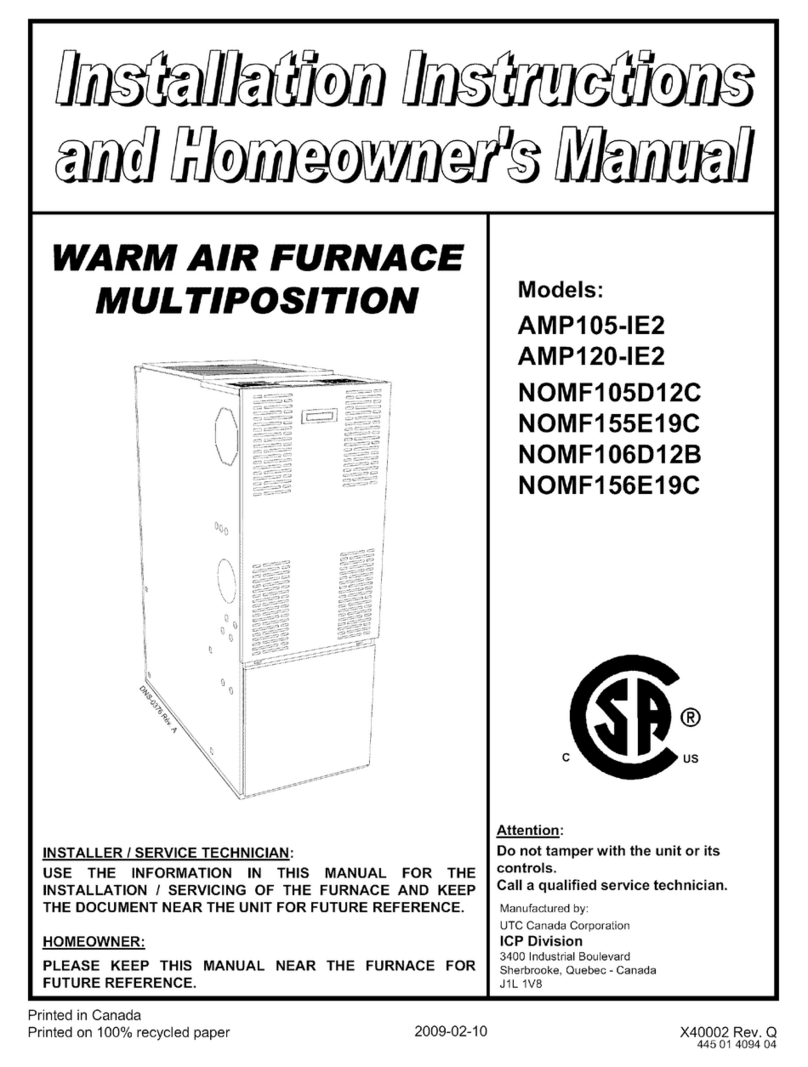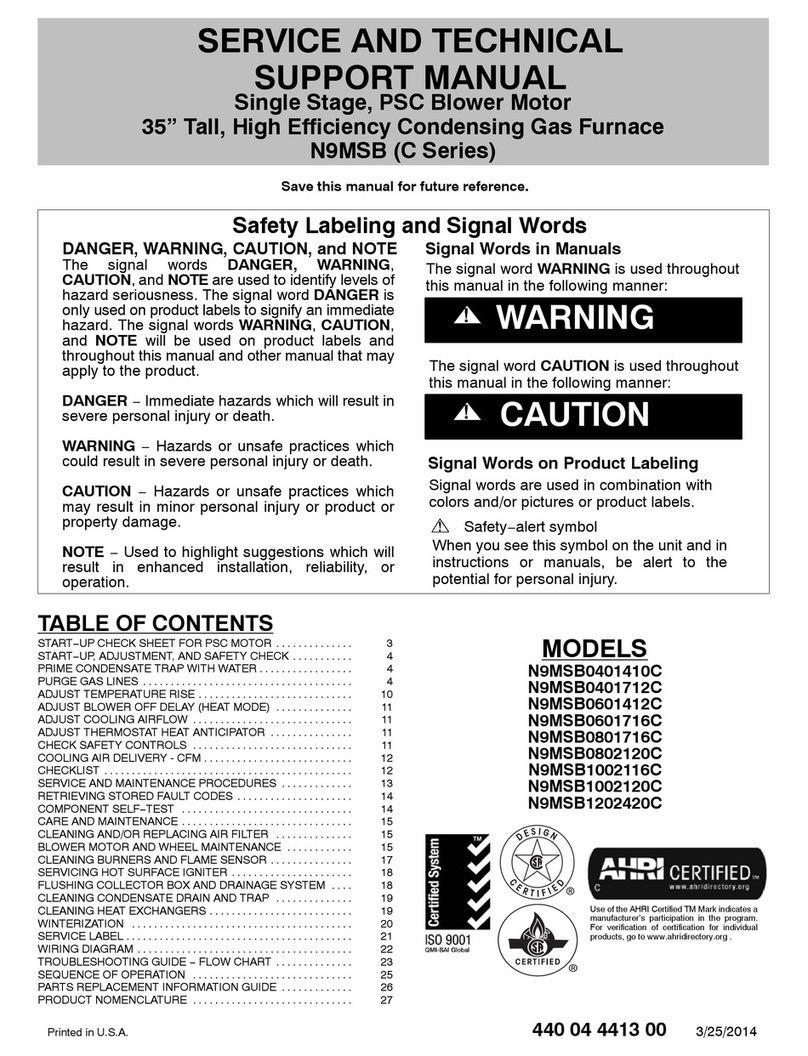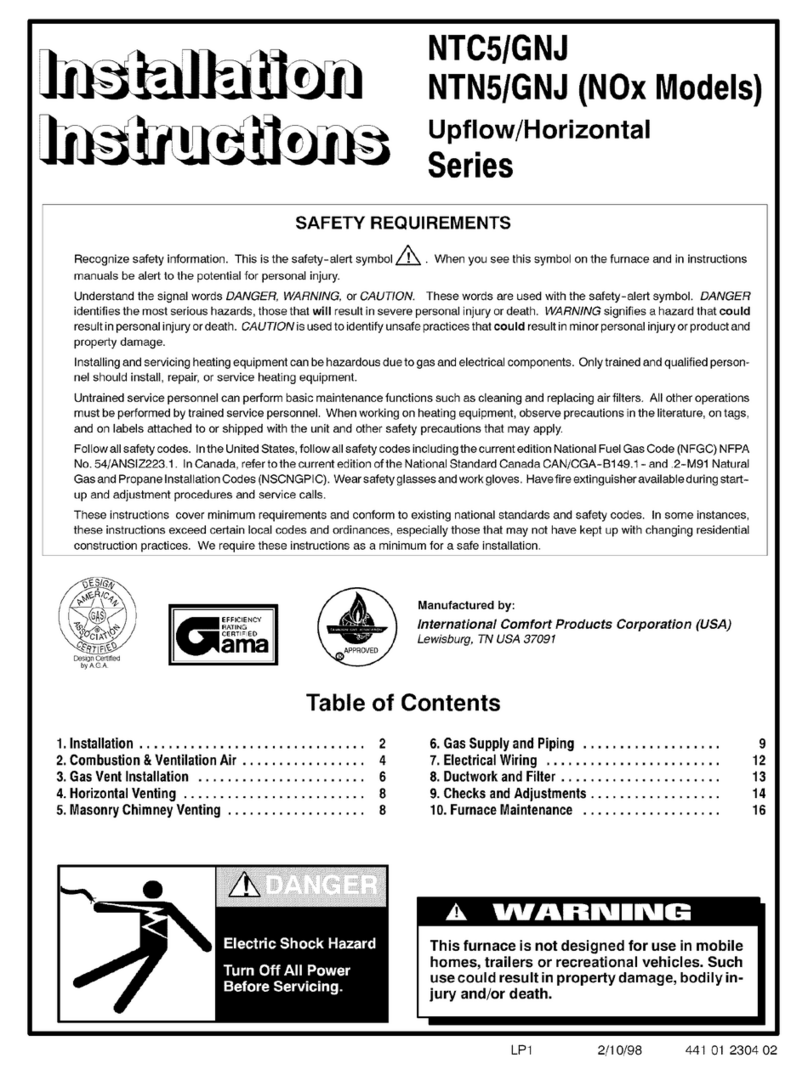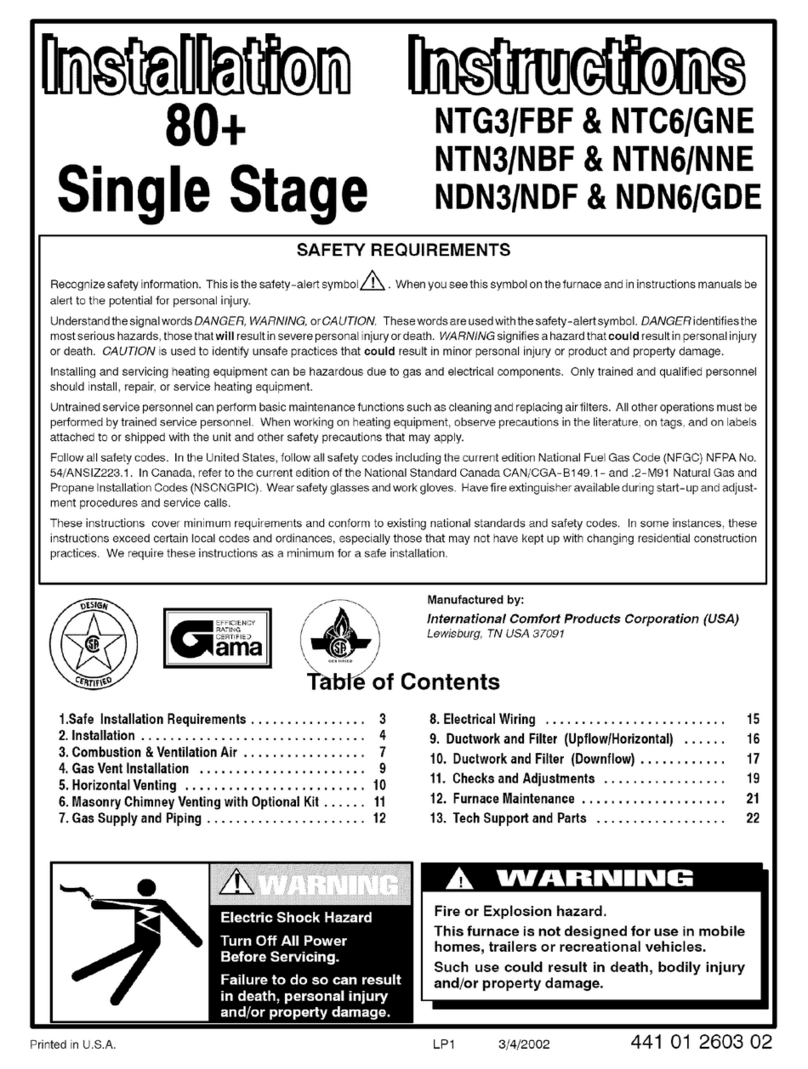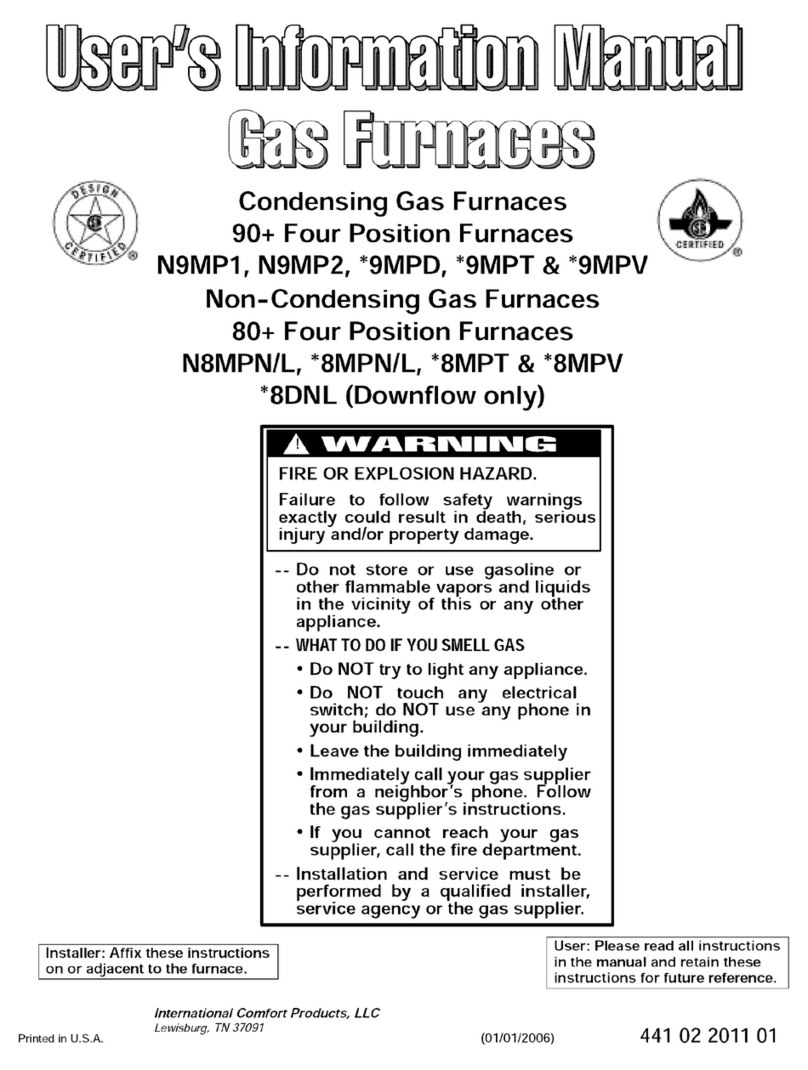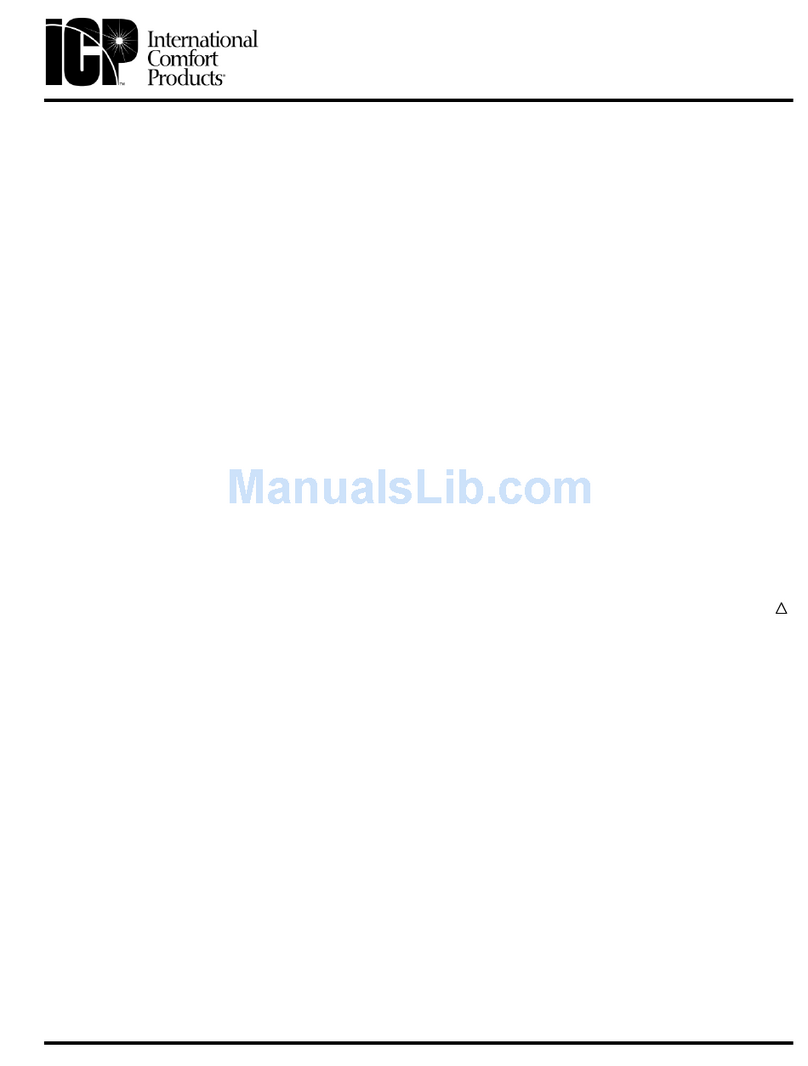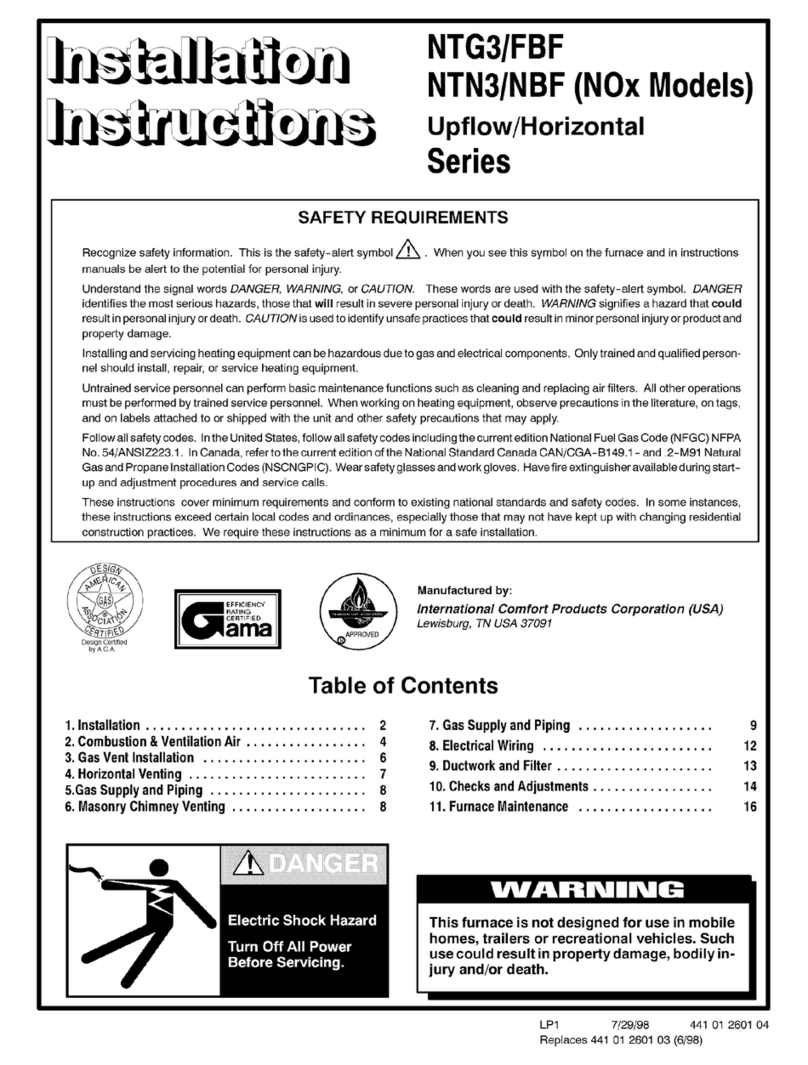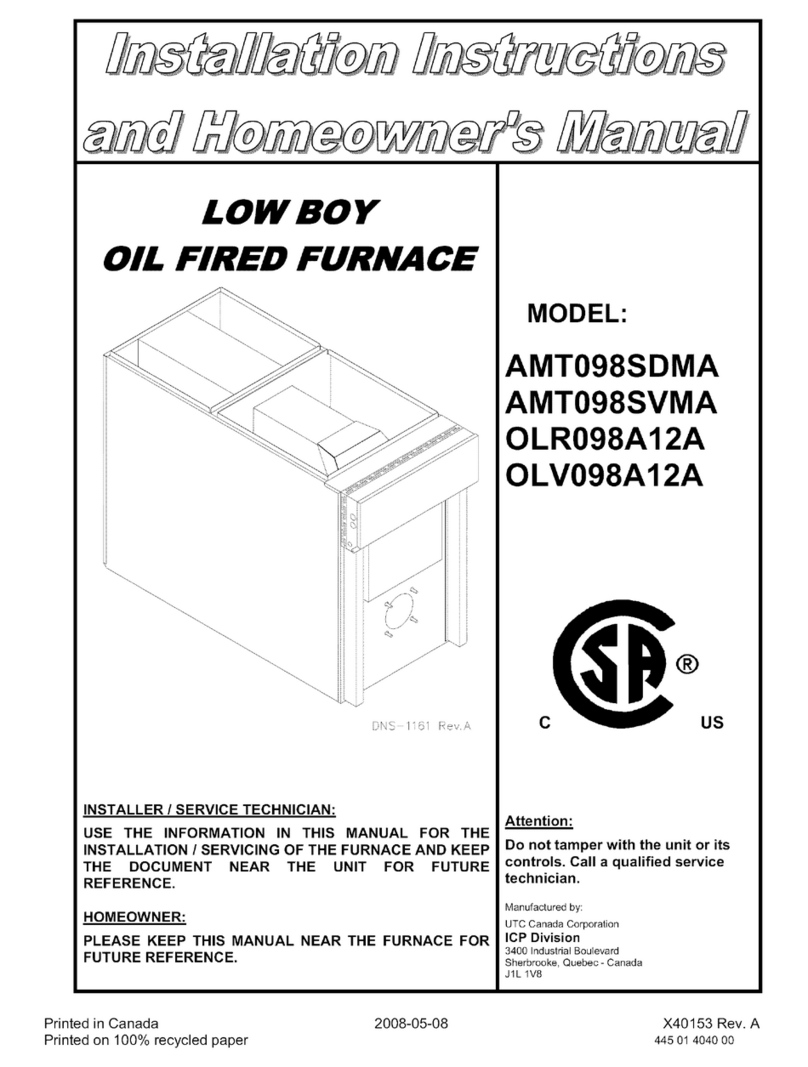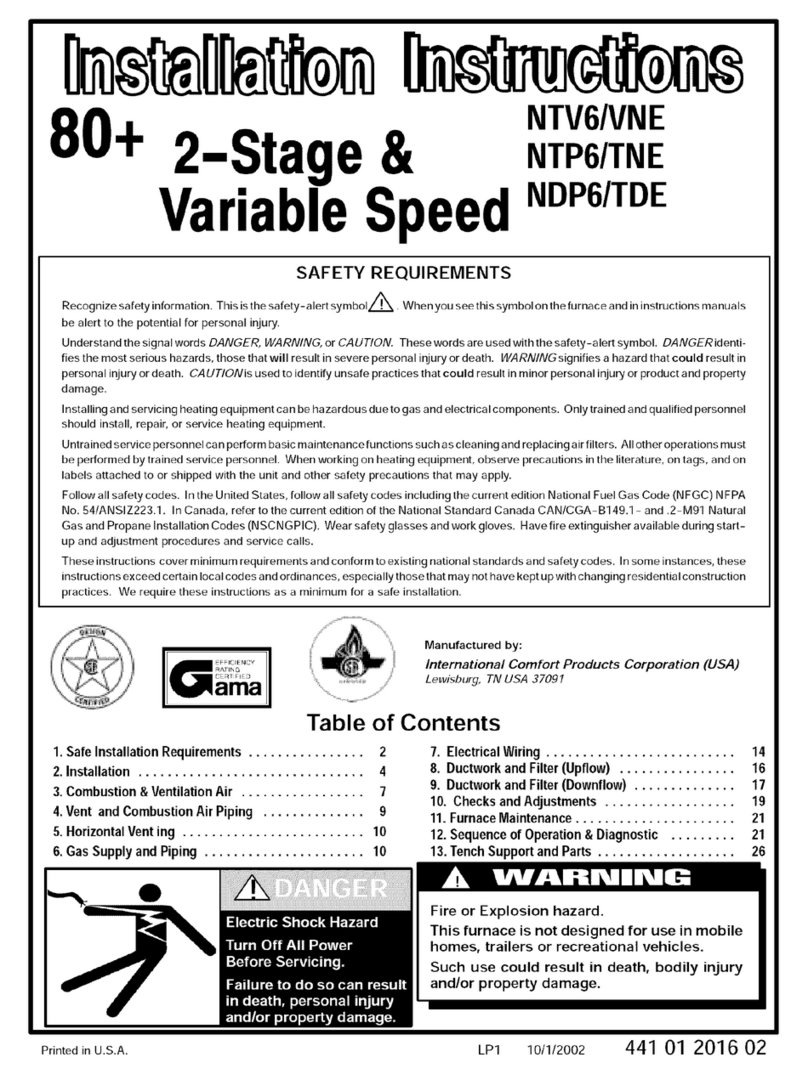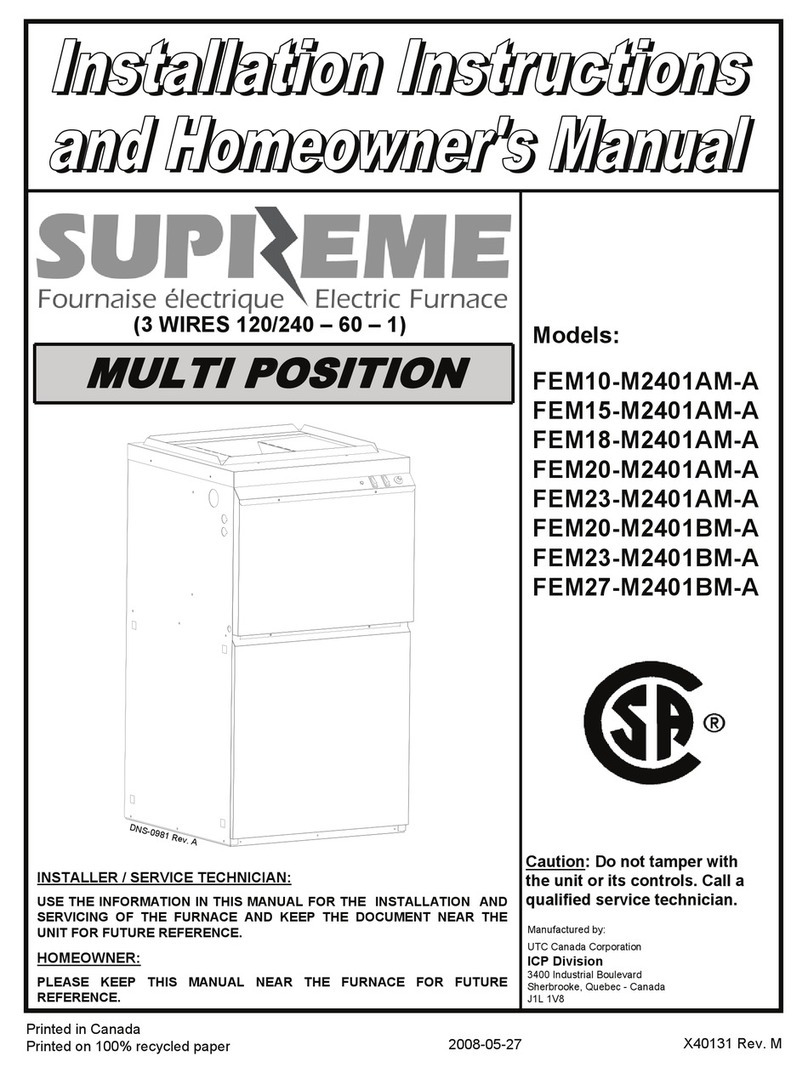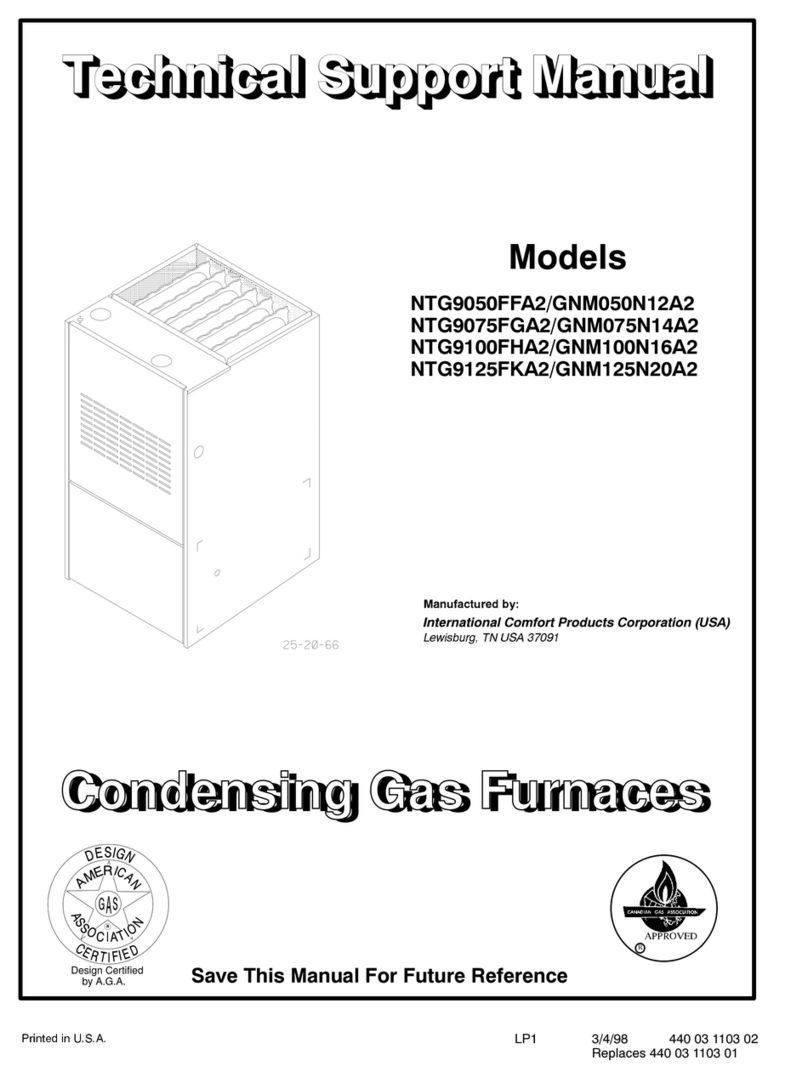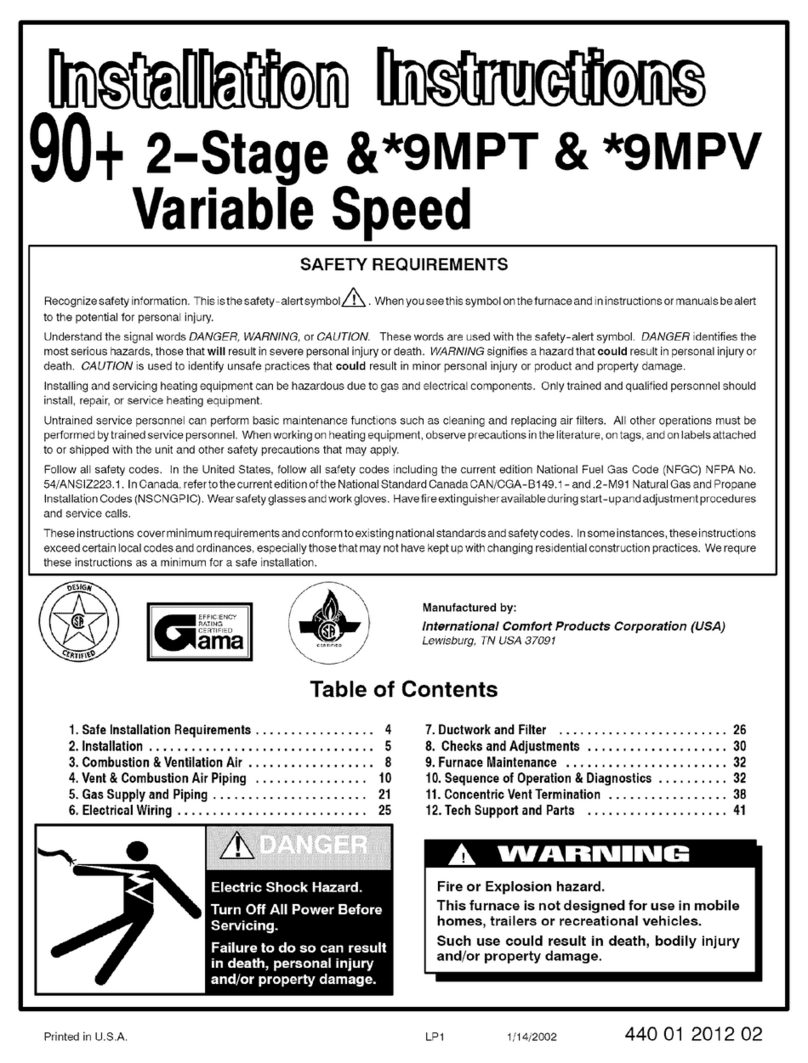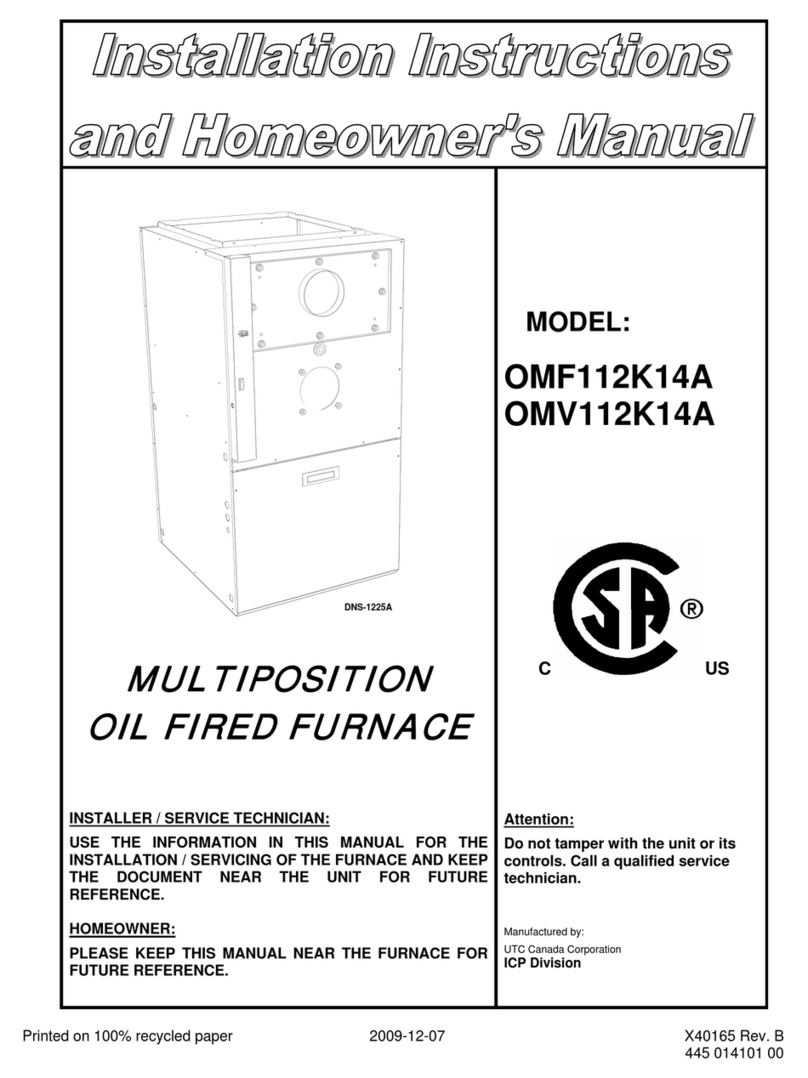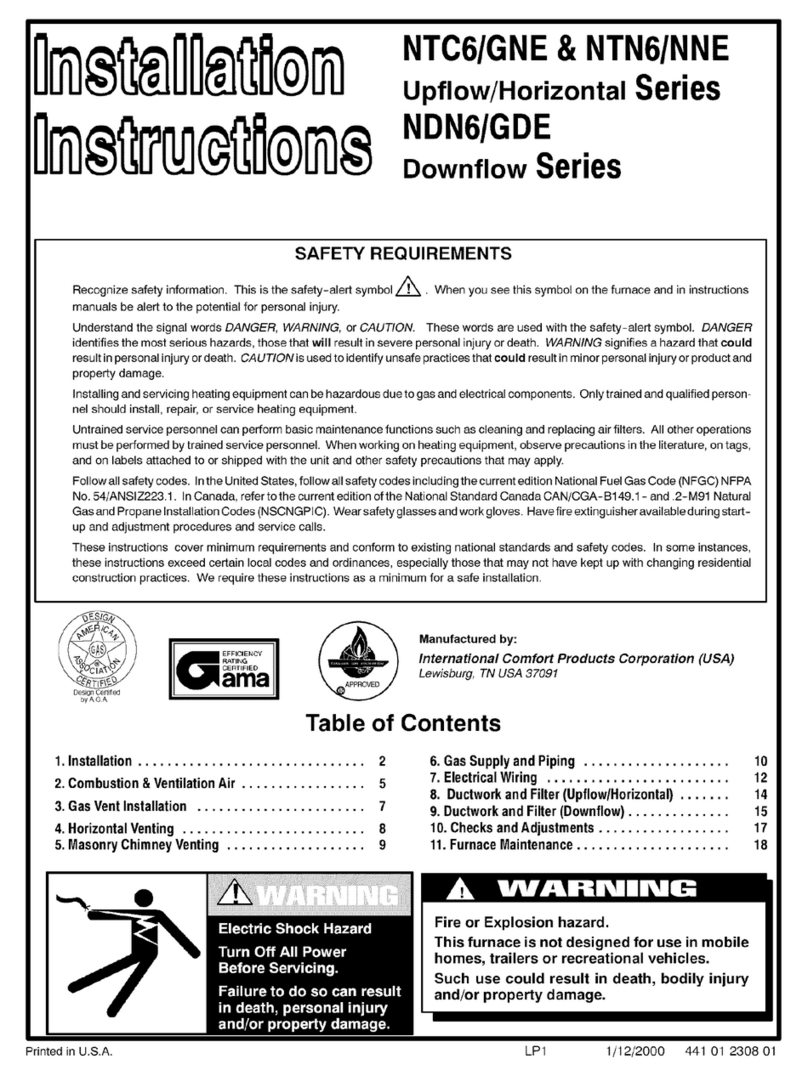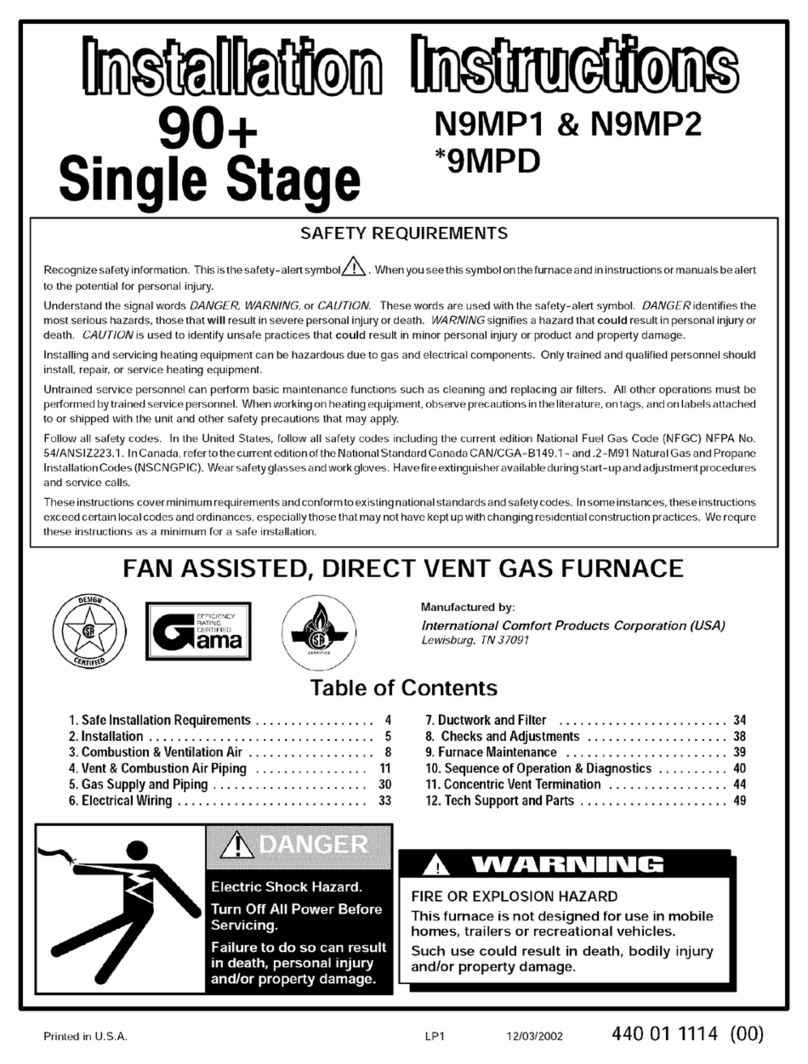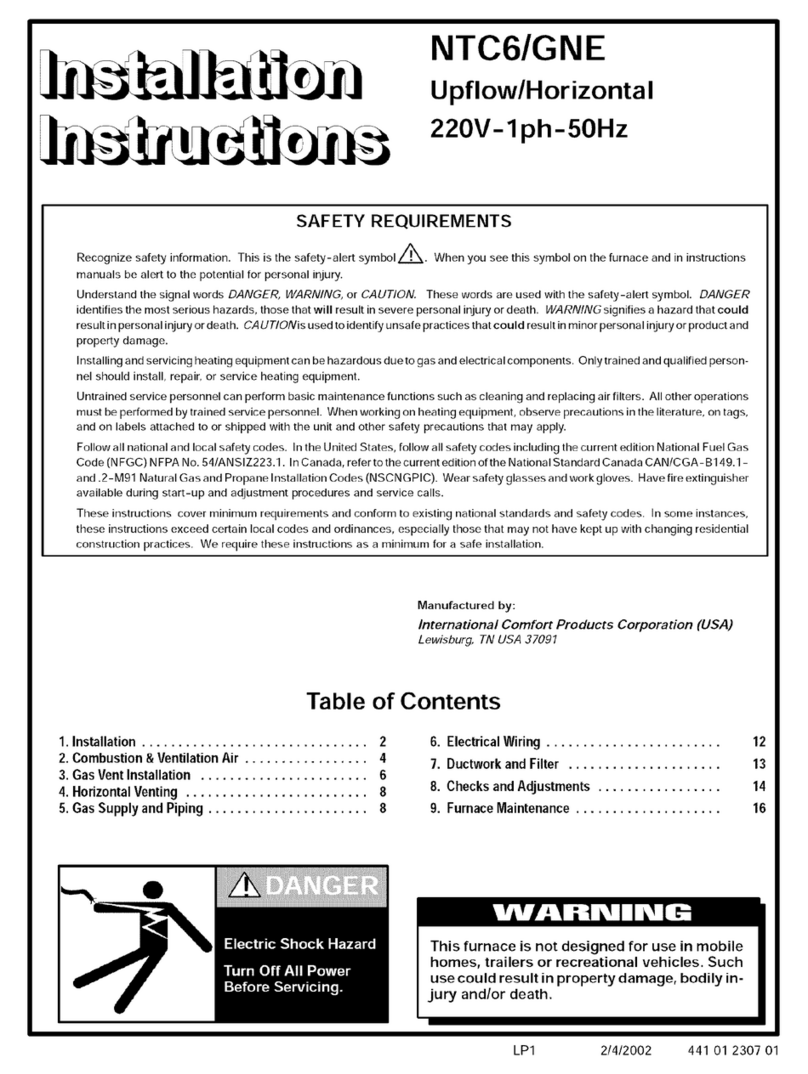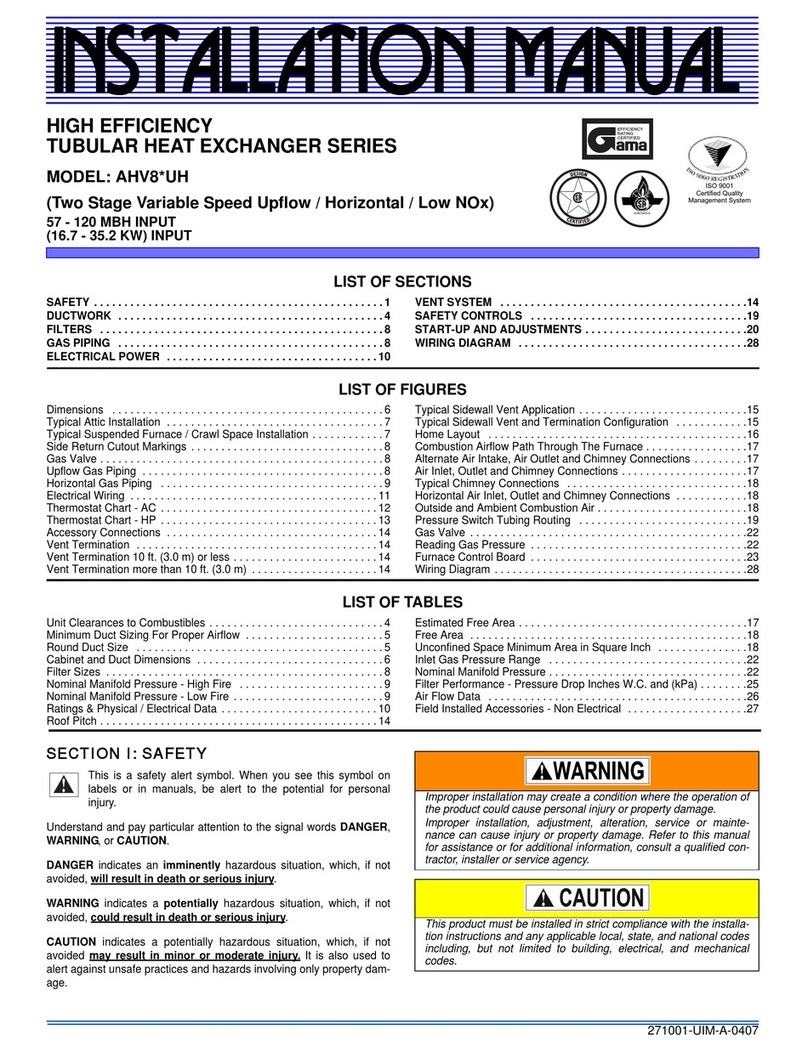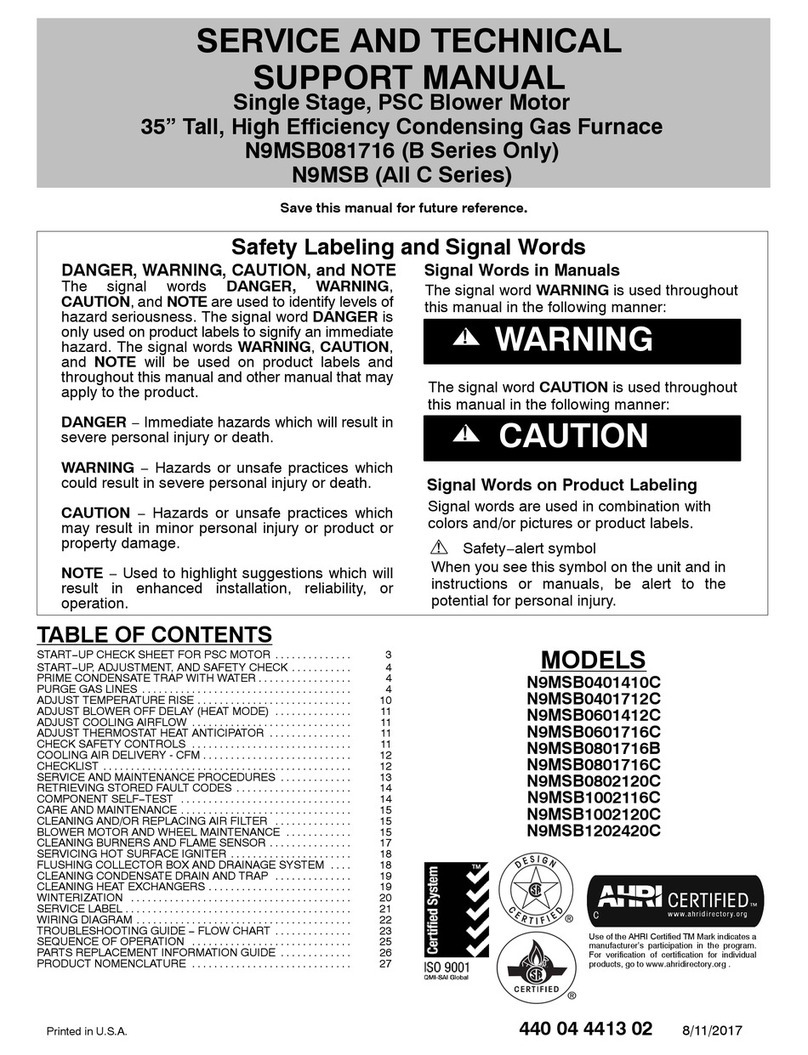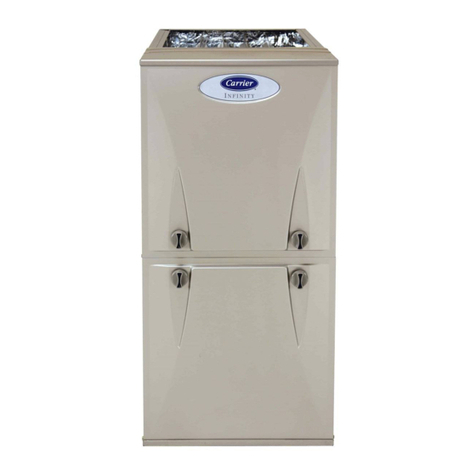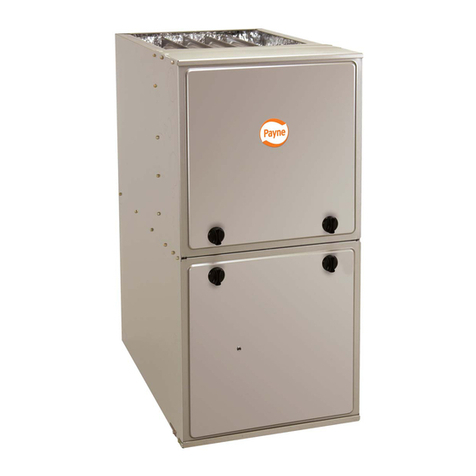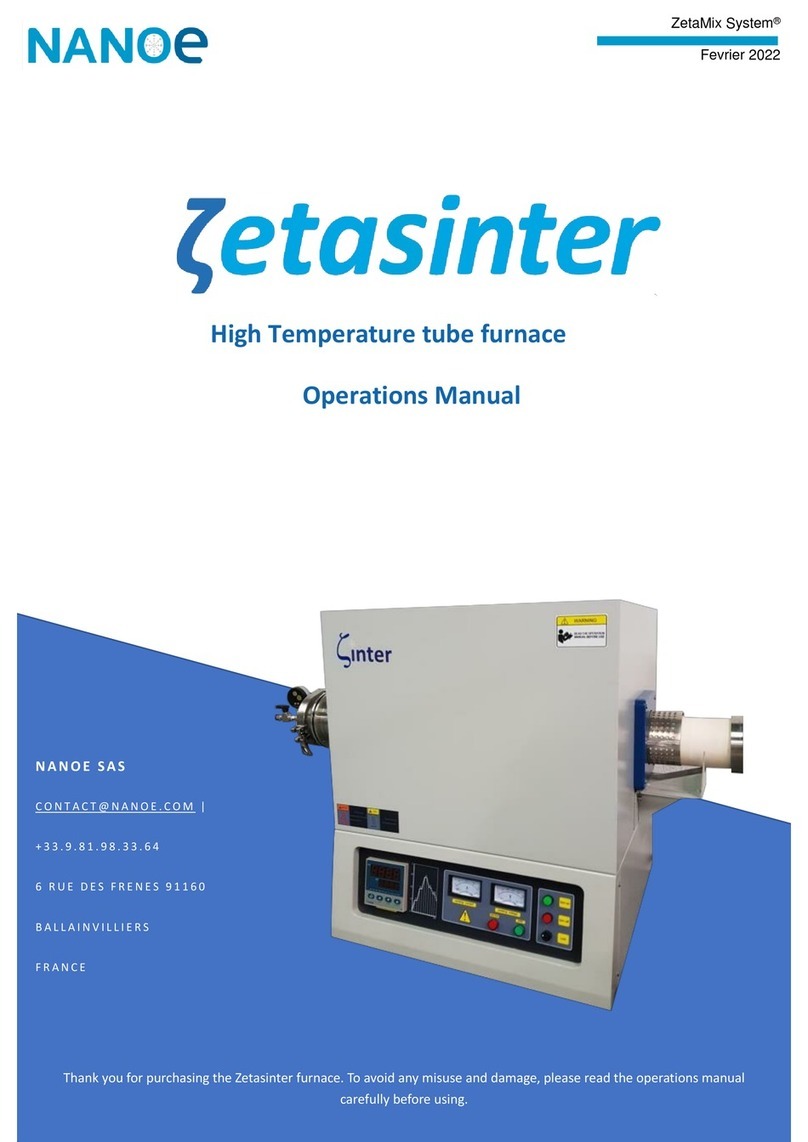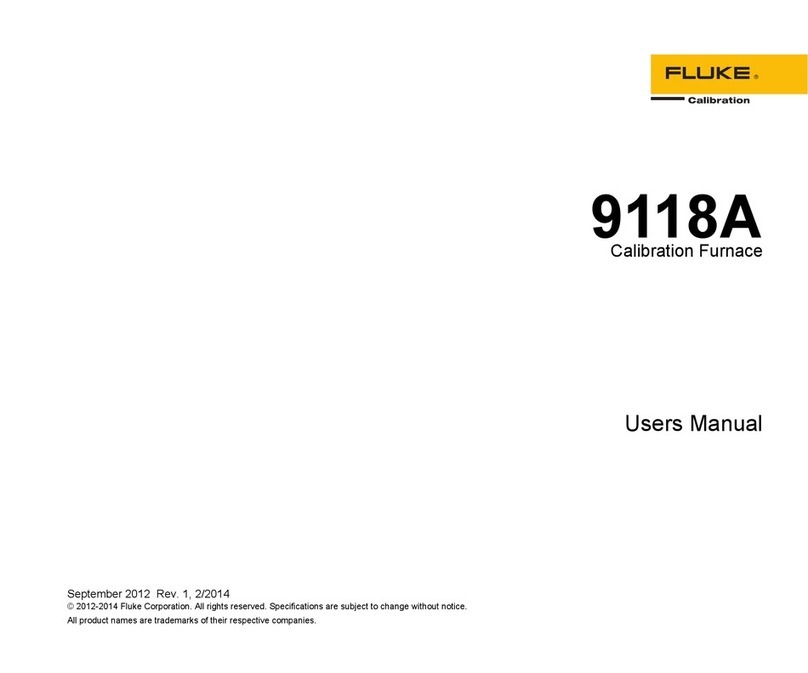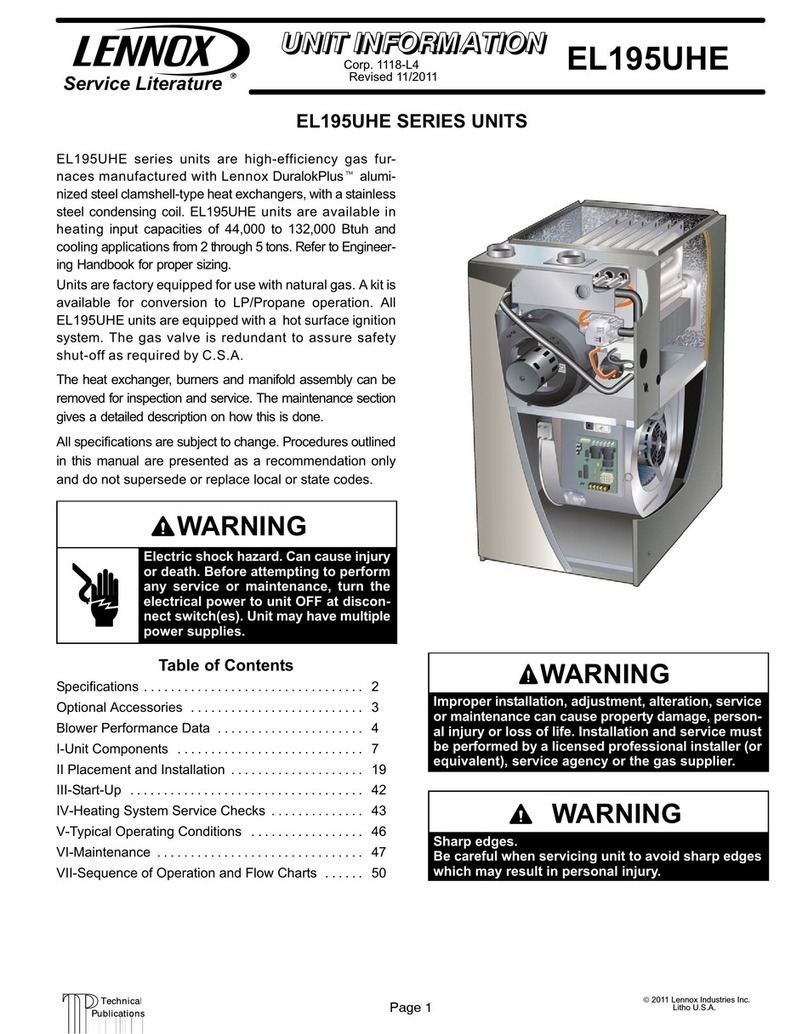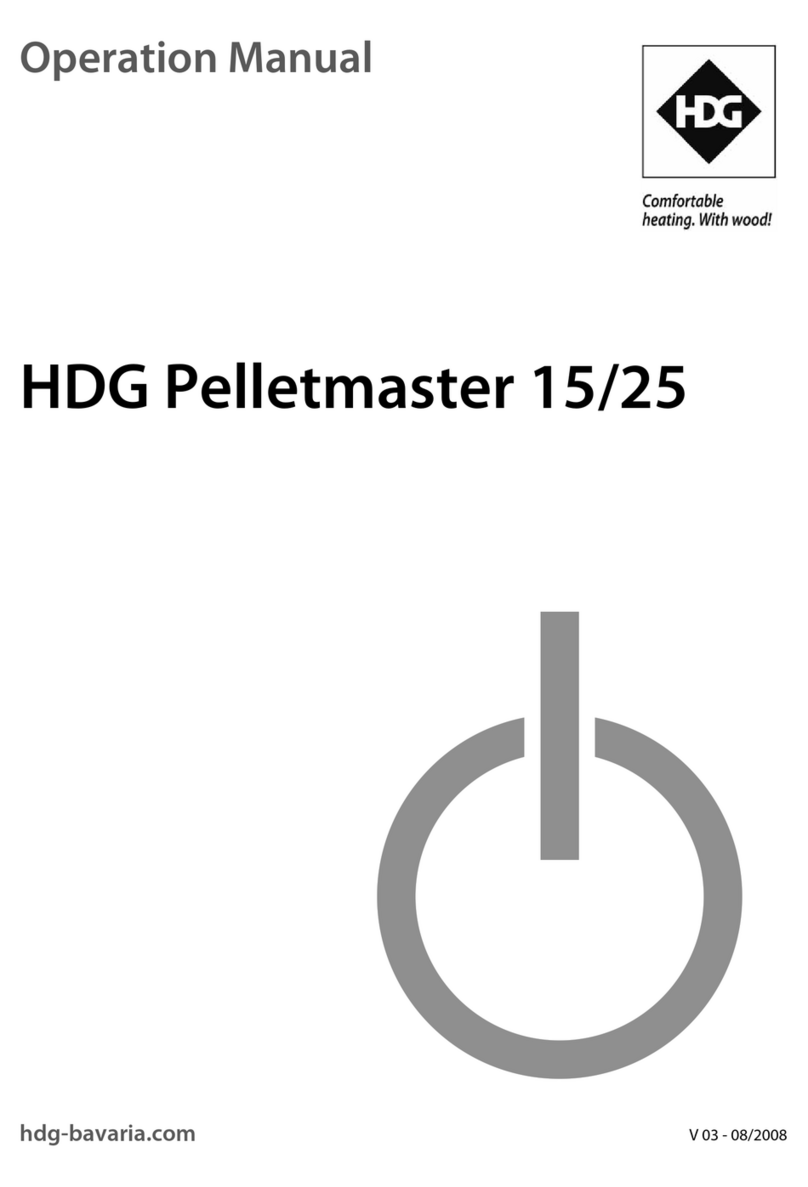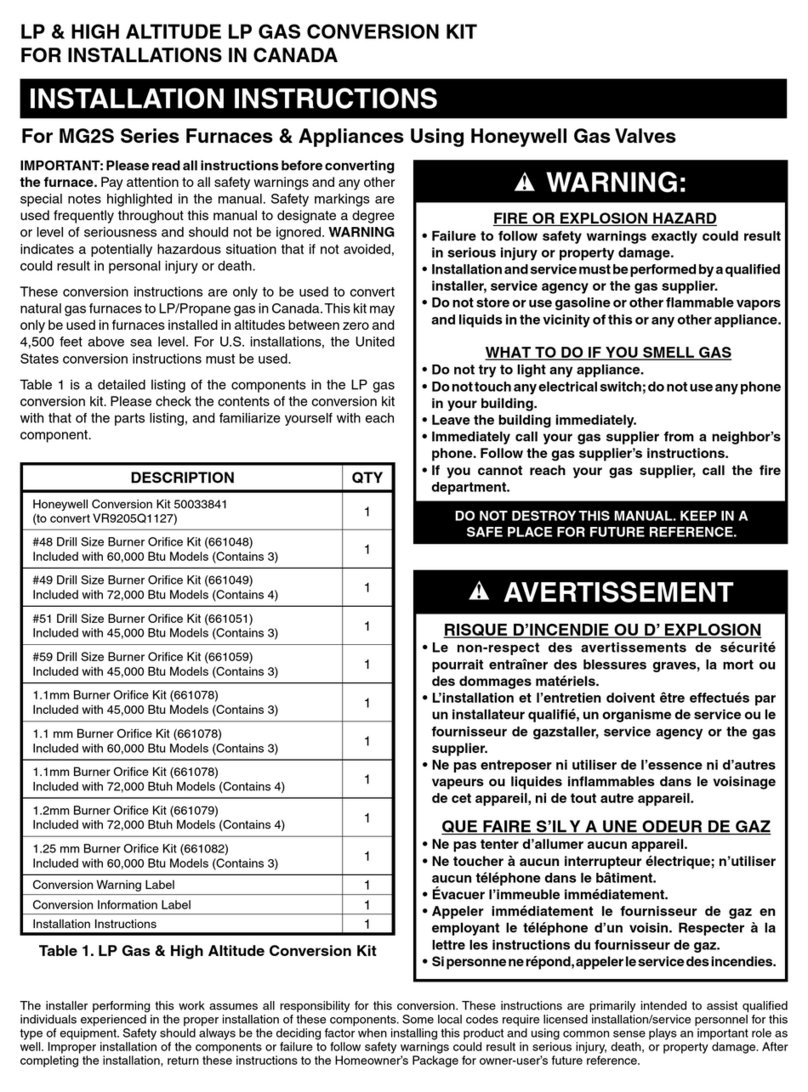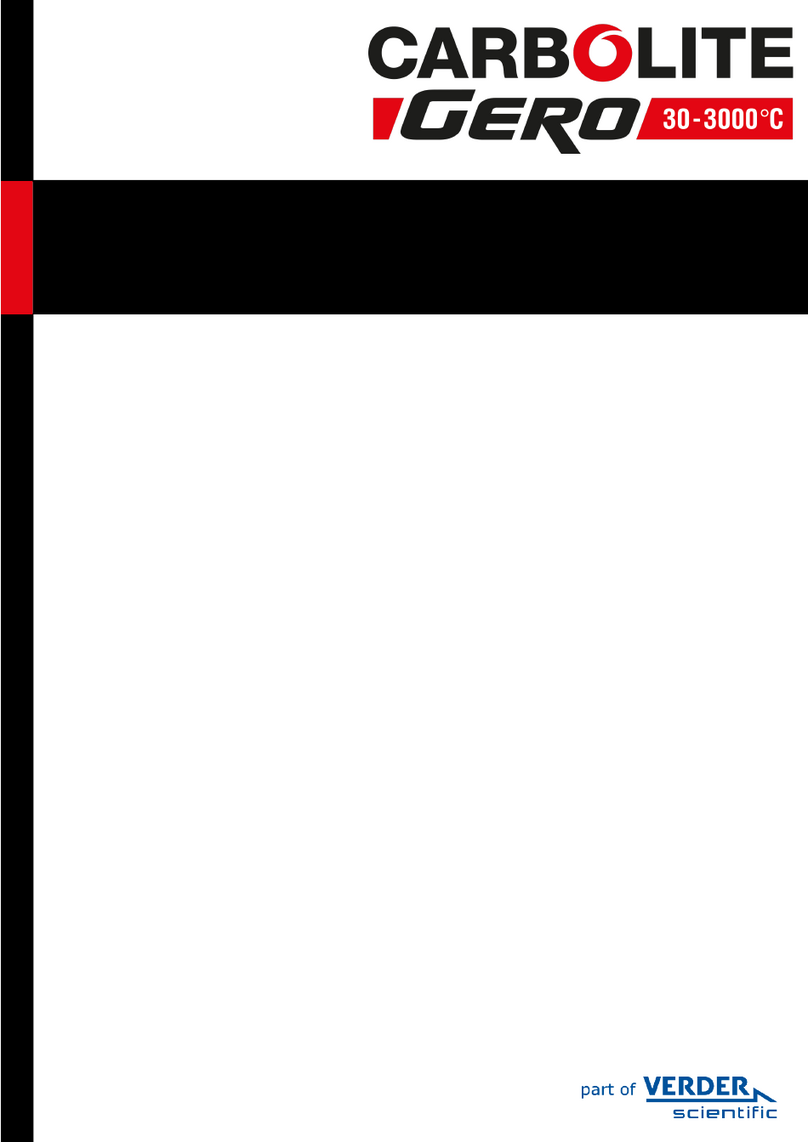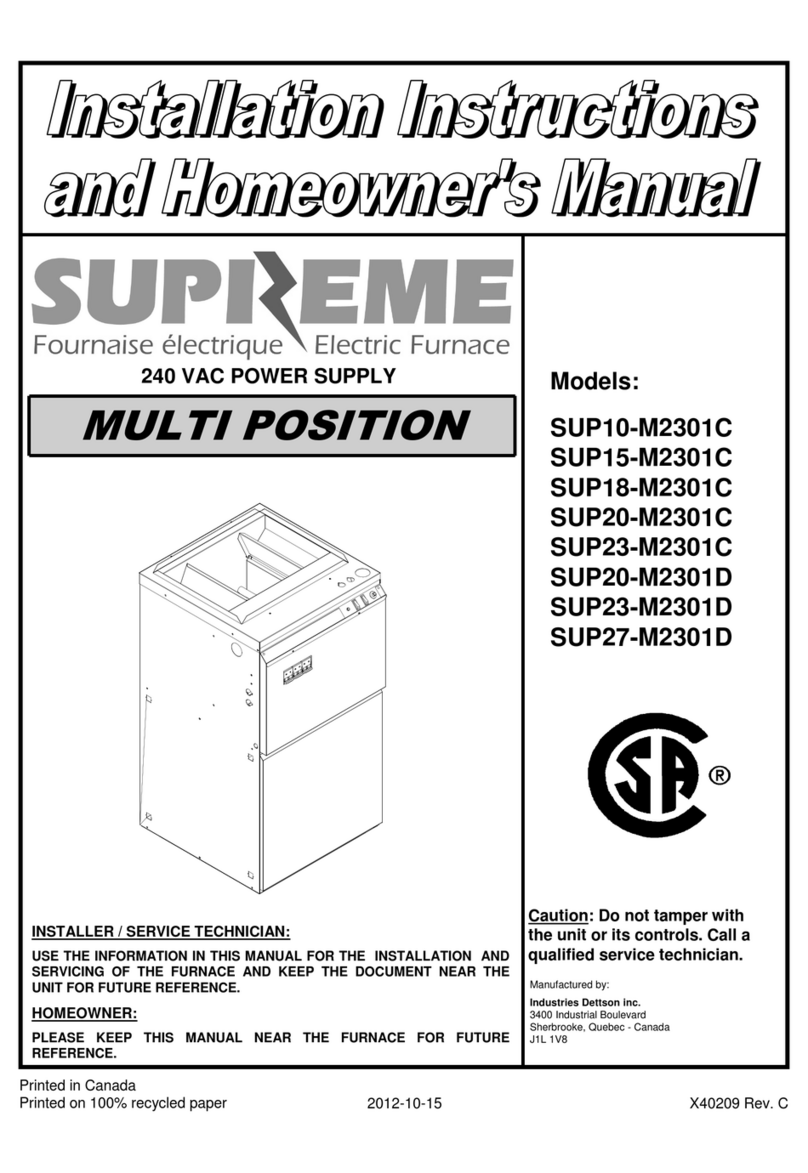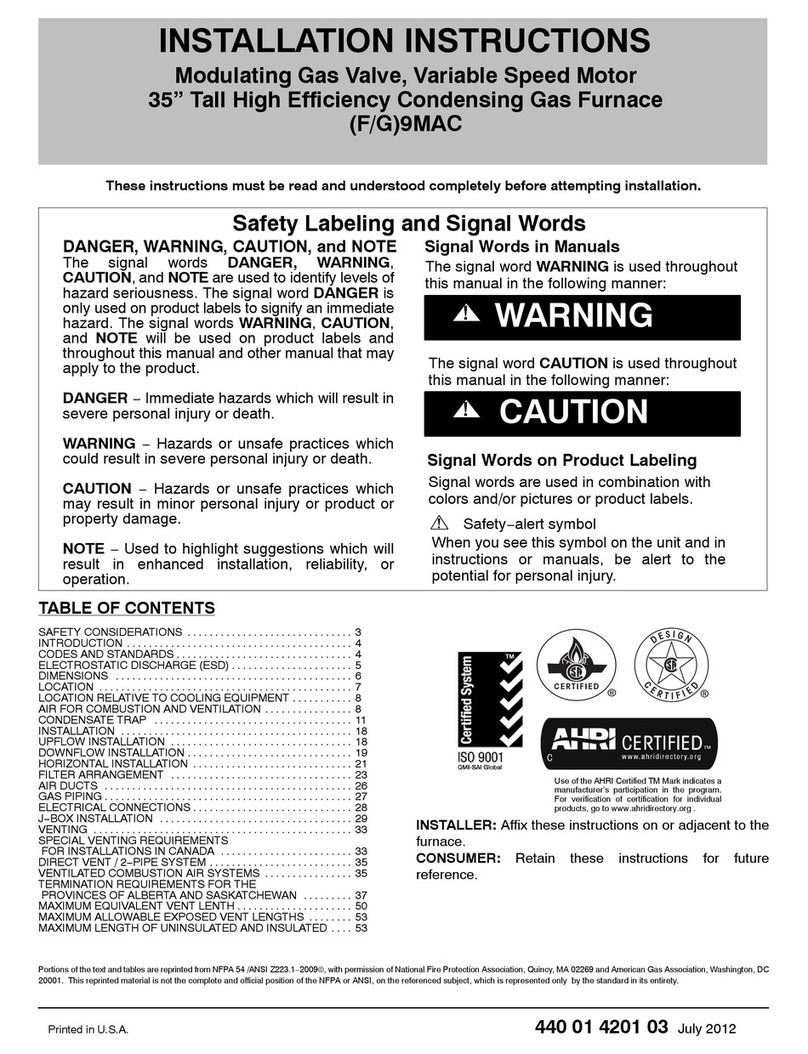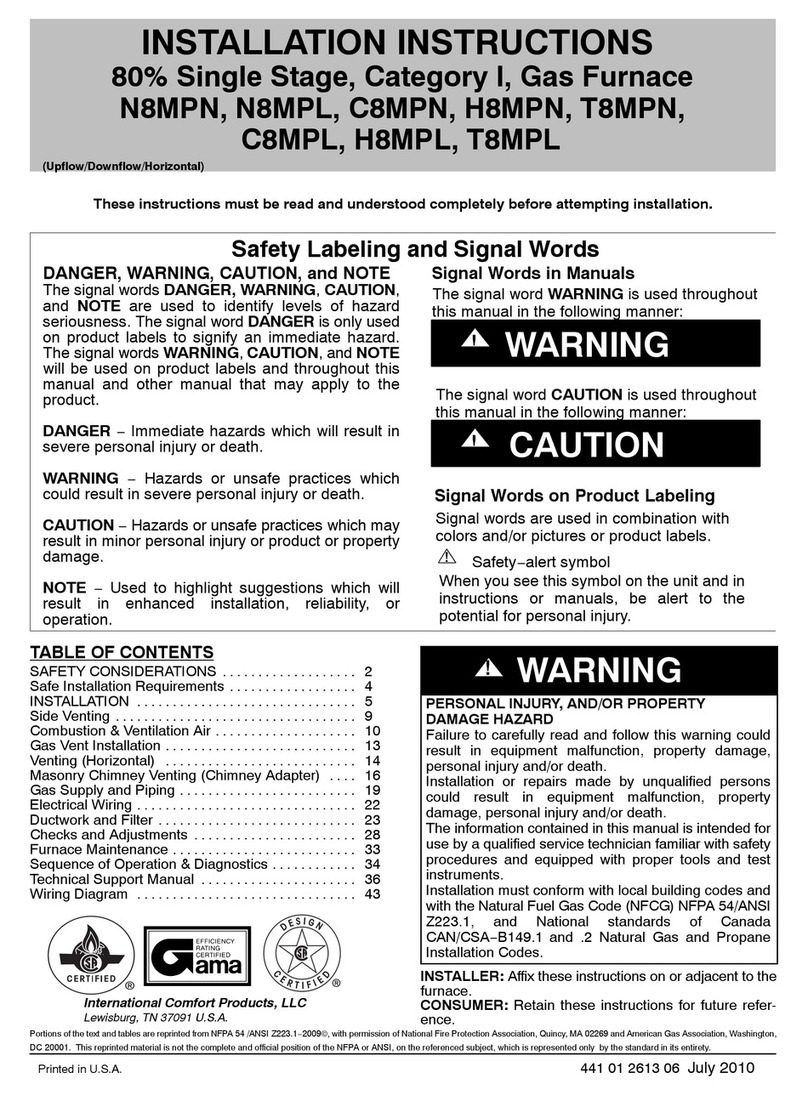As this unit may be installed as an upflow, counterflow or horizontal
furnace (right or left), it may be located in a basement, on the same
level as the area to be heated, suspended, or in a crawlspace. In any
case, the unit should always be installed level.
In a basement, or when installed on the floor (as in a crawlspace), it
is recommended that the unit be installed on a concrete pad that is
1" to 2" thick.
When installed in the counterflow position, this furnace must not be
installed on combustible flooring, unless the approved sub-base is
used (Model # DFB-101). The flue pipe must exit the cabinet
through one of the panel opening, then extended up the side of the
furnace. Care must be taken to insure that the clearances from the
flue pipe to combustible construction are maintained.
Also, it is recommend to use the flue pipe guard kit
(Model # FPG-101 or # FPG102) to insure that a fire hazard
condition does not exist.
When installed in a horizontal position, the furnace may be
suspended by using an angle iron frame, as long as the total weight
of both the furnace and the frame are allowed for in the support
calculations. (Other methods of suspending are acceptable.) When
installed in the Horizontal Position, this furnace must not be installed
on combustible flooring, unless the approved sub-base is used
(Model # HFB-101).
This furnace is approved for reduced clearances to combustible
construction. Therefore, it may be installed in a closet or similar
enclosure.
The required minimum clearances for this furnace in all
positions are specified in tables # 3.2 and 3.3.
The furnace should be located as close as possible to the chimney
or vent in order to keep vent connections shorts and direct. The
furnace should also be located as near as possible to the center of
the air distribution system.
ICAUTION
Do NOT operate furnace in a corrosive atmosphere
containing chlorine, fluorine or any other damaging
chemicals. Refer to Part 1, section 5.2.
Electrical shock hazard.
This furnace is not watertight and is not designed
for outdoor installation. This furnace shall be
installed in such a manner as to protect the
electrical components from water.
Outdoor installation would lead to a hazardous
electrical condition and to premature furnace
failure, property damage, bodily injury or death.
4) VENTING
Poison carbon monoxide gas, fire and explosion
hazard.
Read and follow all instructions in this section.
Failure to properly vent this furnace can result in
property damage, personal injury and/or death.
CAUTION
When the furnace (chimney installation) is co-vented
with other combustion appliances such as a water
heater, the allowable venting materials (i.e. L-Vent etc.)
for use with those appliances should also be
investigated.
Poison carbon monoxide gas hazard
Never install a hand operated damper in the vent
pipe. However, any Underwriters Laboratories
listed electrically operated automatic type vent
damper may be installed if desired. Be sure to
follow instructions provided with vent damper.
Read and follow all instructions in this section.
Failure to properly vent this furnace or other
appliances can result in property damage, personal
injury and/or death.
Venting of the furnace should be to the outside and in accordance
with local codes or requirements dthe local utility.
OIL FIRED APPLIANCES SHALL BE CONNECTED TO FLUES
HAVING SUFFICIENT DRAFT AT ALL TIMES TO ENSURE SAFE
AND PROPER OPERATION OF APPLIANCE.
For additional venting information refer to ANSl/NFPA 211 Chimney,
Fireplaces, Vents and Solid Fuel Burning Appliances and/or CSA
B139 Installation Code.
This furnace is certified for use with Type '%" vent (maximum flue
gas temperature 575°F). The flue pipe clearance knockout in the
front top or side panel should be removed. Install the flue elbow so
that it exits the furnace cabinet through that opening.
Pre-instatlation vent system inspection:
Before this furnace is installed, it is highly recommended that any
existing vent system be completely inspected.
For any chimney or vent, this should include the following:
a. Inspection for any deterioration in the chimney or vent. If
deterioration is discovered, the chimney must be repaired or
the vent must be replaced.

